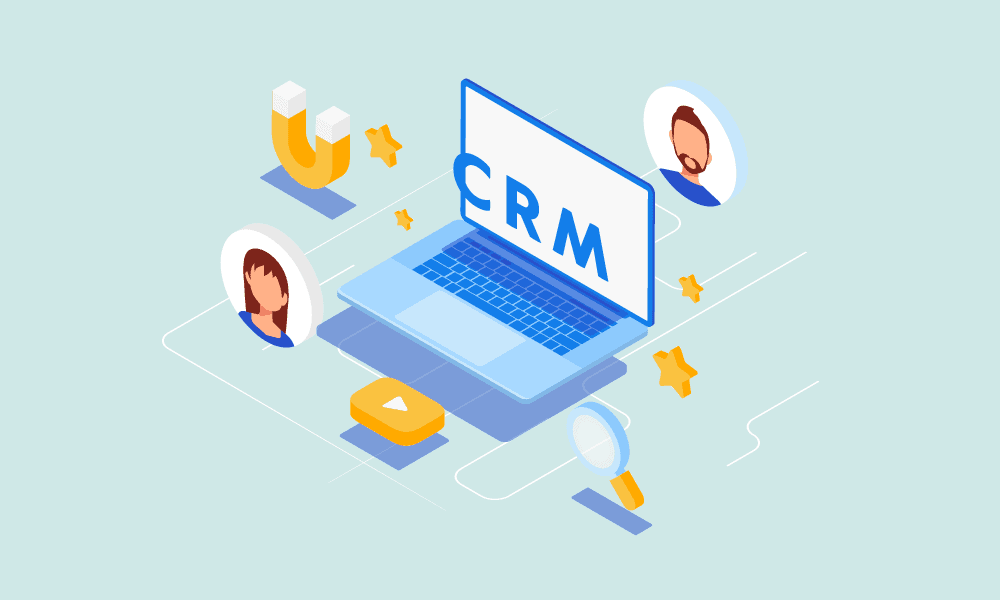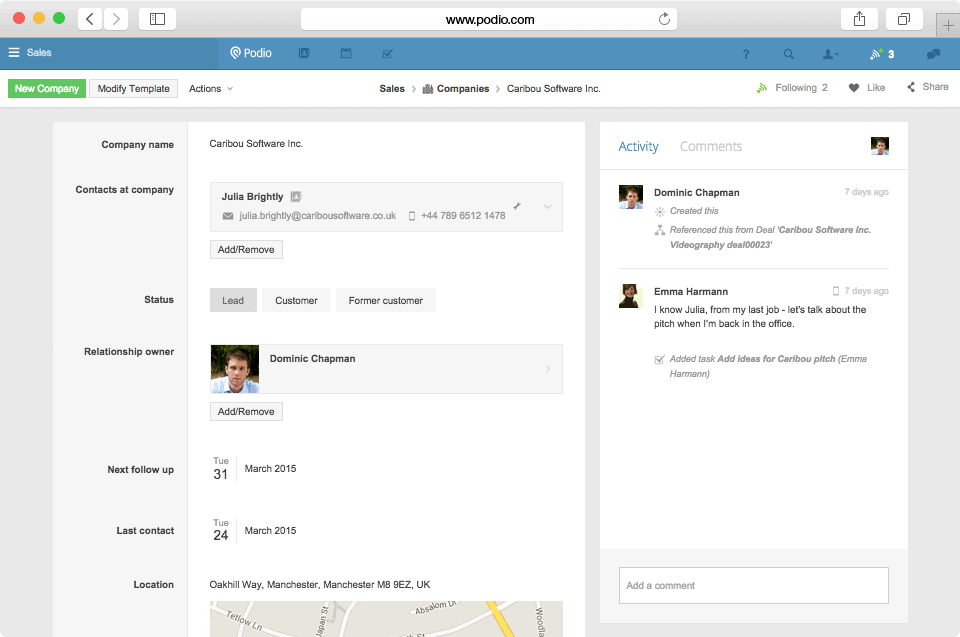
Unlocking Growth: A Comprehensive Guide to CRM Marketing Integration
In today’s fast-paced business world, staying ahead of the curve requires more than just a great product or service. It demands a deep understanding of your customers and the ability to engage them effectively. This is where the power of CRM marketing integration comes into play. But what exactly is it, and why is it so crucial for your business?
This comprehensive guide will delve into the intricate world of CRM marketing integration, exploring its benefits, implementation strategies, and the best practices you need to know to maximize your return on investment (ROI). We’ll cover everything from the basics to advanced techniques, ensuring you have a solid understanding of how to leverage this powerful tool to drive growth and build lasting customer relationships.
What is CRM Marketing Integration?
At its core, CRM marketing integration is the process of connecting your Customer Relationship Management (CRM) system with your marketing automation platform. This integration allows for a seamless flow of data between the two systems, providing a 360-degree view of your customers. This holistic perspective is invaluable for creating personalized marketing campaigns, improving customer experiences, and ultimately, boosting your bottom line.
Think of it like this: Your CRM is the central hub where you store all your customer data, including their contact information, purchase history, and interactions with your sales team. Your marketing automation platform, on the other hand, is the engine that powers your marketing campaigns, from email marketing and social media to lead nurturing and more. When these two systems are integrated, they work together in perfect harmony, allowing you to:
- Segment your audience based on their behavior and preferences.
- Personalize your marketing messages to resonate with individual customers.
- Automate repetitive tasks, freeing up your team to focus on more strategic initiatives.
- Track the effectiveness of your campaigns and make data-driven decisions.
The Benefits of CRM Marketing Integration
The advantages of integrating your CRM and marketing automation platforms are numerous and far-reaching. Here are some of the key benefits:
Improved Customer Segmentation
CRM marketing integration allows you to segment your audience with unparalleled precision. By combining data from your CRM (e.g., demographics, purchase history) with data from your marketing automation platform (e.g., website behavior, email engagement), you can create highly targeted customer segments. This level of segmentation enables you to deliver the right message to the right person at the right time, significantly increasing the likelihood of conversion.
Enhanced Personalization
Personalization is no longer a luxury; it’s a necessity. Customers expect brands to understand their needs and preferences. CRM marketing integration empowers you to personalize your marketing efforts at scale. You can tailor your email campaigns, website content, and even your sales interactions based on individual customer data, creating a more relevant and engaging experience.
Increased Lead Generation and Nurturing
Integrated systems make lead generation and nurturing more efficient and effective. You can automatically capture lead information from your website, landing pages, and other marketing channels and seamlessly add it to your CRM. From there, you can nurture leads with targeted email campaigns, personalized content, and automated workflows, guiding them through the sales funnel and ultimately converting them into customers.
Improved Sales and Marketing Alignment
One of the biggest challenges for many businesses is aligning their sales and marketing teams. CRM marketing integration bridges the gap between these two departments by providing a shared view of the customer. This alignment fosters better communication, collaboration, and a more cohesive customer experience, leading to increased sales and revenue.
Data-Driven Decision Making
With integrated systems, you have access to a wealth of data that can be used to inform your marketing strategy. You can track the performance of your campaigns, identify what’s working and what’s not, and make data-driven decisions to optimize your efforts. This continuous cycle of analysis and improvement is essential for long-term success.
Increased ROI
Ultimately, the goal of CRM marketing integration is to improve your ROI. By streamlining your marketing efforts, personalizing your customer interactions, and making data-driven decisions, you can significantly increase your conversion rates, customer lifetime value, and overall profitability.
Key Features to Look for in CRM Marketing Integration
Not all CRM and marketing automation platforms are created equal. When choosing the right solutions for your business, consider the following key features:
Seamless Data Synchronization
The ability to seamlessly synchronize data between your CRM and marketing automation platform is crucial. Look for platforms that offer real-time or near real-time data synchronization to ensure that your data is always up-to-date and accurate.
Advanced Segmentation Capabilities
Choose a platform that offers robust segmentation capabilities, allowing you to create highly targeted customer segments based on a variety of criteria, including demographics, behavior, and purchase history.
Personalization Features
Look for platforms that offer robust personalization features, such as dynamic content, personalized email templates, and the ability to tailor your website content based on individual customer data.
Automation Workflows
Automation workflows are essential for streamlining your marketing efforts. Choose a platform that offers a wide range of automation features, such as lead nurturing, email marketing, and social media automation.
Reporting and Analytics
Comprehensive reporting and analytics are essential for tracking the performance of your campaigns and making data-driven decisions. Look for platforms that offer detailed reports on key metrics, such as conversion rates, ROI, and customer lifetime value.
Integration with Other Tools
Consider the other tools you use in your business, such as your email marketing platform, social media platforms, and e-commerce platform. Choose a CRM and marketing automation platform that integrates seamlessly with these tools to create a unified marketing ecosystem.
Implementing CRM Marketing Integration: A Step-by-Step Guide
Implementing CRM marketing integration can seem daunting, but with a well-defined plan, you can ensure a smooth and successful implementation. Here’s a step-by-step guide:
1. Define Your Goals and Objectives
Before you start, it’s essential to define your goals and objectives for CRM marketing integration. What do you hope to achieve? Are you looking to increase lead generation, improve customer retention, or boost sales? Clearly defining your goals will help you choose the right platforms and measure your success.
2. Choose the Right Platforms
Research and choose the CRM and marketing automation platforms that best meet your needs. Consider factors such as features, pricing, ease of use, and integration capabilities. Popular choices include Salesforce, HubSpot, Marketo, and Pardot.
3. Plan Your Integration Strategy
Develop a detailed plan for how you will integrate your CRM and marketing automation platforms. This plan should include data mapping, workflow design, and testing procedures.
4. Map Your Data
Identify the data fields that you want to synchronize between your CRM and marketing automation platform. This may include contact information, purchase history, website behavior, and email engagement data.
5. Design Your Workflows
Design automated workflows to streamline your marketing efforts. This may include lead nurturing campaigns, automated email sequences, and personalized website content.
6. Test Your Integration
Thoroughly test your integration to ensure that data is synchronizing correctly and that your workflows are functioning as expected. This will help you identify and resolve any issues before you launch your campaigns.
7. Launch Your Campaigns
Once you’ve tested your integration, you can launch your marketing campaigns. Monitor your campaigns closely and make adjustments as needed.
8. Measure Your Results
Track the performance of your campaigns and measure your results against your goals and objectives. Use this data to optimize your efforts and improve your ROI.
Best Practices for CRM Marketing Integration
To maximize the effectiveness of your CRM marketing integration, follow these best practices:
Start Small
Don’t try to do everything at once. Start with a few key integrations and workflows, and gradually expand your efforts as you gain experience.
Clean Your Data
Ensure that your CRM data is clean and accurate before you integrate it with your marketing automation platform. This will help you avoid sending inaccurate or irrelevant messages to your customers.
Segment Your Audience Effectively
Take advantage of the advanced segmentation capabilities offered by your integrated systems to create highly targeted customer segments. This will help you deliver more relevant and engaging content.
Personalize Your Marketing Messages
Use personalization features to tailor your marketing messages to individual customers. This will help you create a more relevant and engaging experience.
Automate Repetitive Tasks
Use automation workflows to streamline your marketing efforts and free up your team to focus on more strategic initiatives.
Track Your Results
Track the performance of your campaigns and measure your results against your goals and objectives. Use this data to optimize your efforts and improve your ROI.
Regularly Review and Optimize
CRM marketing integration is an ongoing process. Regularly review your integration and workflows, and make adjustments as needed to ensure that you’re getting the most out of your systems.
Choosing the Right CRM and Marketing Automation Platforms
Selecting the right CRM and marketing automation platforms is crucial for successful integration. Here’s a closer look at some of the leading options in the market:
Customer Relationship Management (CRM) Platforms
These platforms serve as the central hub for managing customer data and interactions. Key considerations when selecting a CRM include:
- Salesforce: A comprehensive CRM known for its scalability and customization options, suitable for businesses of all sizes.
- HubSpot CRM: A free CRM that’s easy to use and ideal for small to medium-sized businesses (SMBs), with strong marketing automation capabilities.
- Zoho CRM: A versatile and affordable CRM with a wide range of features, suitable for SMBs and enterprises.
- Microsoft Dynamics 365: A robust CRM integrated with Microsoft’s suite of business applications, ideal for businesses already using other Microsoft products.
- Pipedrive: A sales-focused CRM that’s easy to use and designed to help sales teams manage their pipelines effectively.
Marketing Automation Platforms
These platforms automate marketing tasks and help nurture leads. Key considerations include:
- HubSpot Marketing Hub: A powerful platform that integrates seamlessly with HubSpot CRM, offering a complete suite of marketing tools.
- Marketo (Adobe Marketo Engage): A sophisticated platform designed for enterprise-level marketing, with advanced features for lead nurturing and campaign management.
- Pardot (Salesforce Pardot): A marketing automation platform designed specifically for B2B marketing, with strong lead scoring and analytics capabilities.
- ActiveCampaign: An affordable and user-friendly platform suitable for SMBs, with a focus on email marketing and automation.
- Mailchimp: While primarily an email marketing platform, Mailchimp offers marketing automation features suitable for SMBs and startups.
The Future of CRM Marketing Integration
The future of CRM marketing integration is bright, with new technologies and trends emerging that will further enhance its capabilities. Some of the key trends to watch include:
Artificial Intelligence (AI)
AI is already playing a significant role in CRM marketing integration, and its influence will only continue to grow. AI-powered tools can automate tasks, personalize customer experiences, and provide valuable insights to inform marketing strategies.
Hyper-Personalization
Customers are increasingly demanding personalized experiences. CRM marketing integration will play a key role in enabling hyper-personalization, allowing businesses to tailor their marketing efforts to individual customer preferences and behaviors.
Predictive Analytics
Predictive analytics uses data to forecast future customer behavior. CRM marketing integration will allow businesses to leverage predictive analytics to identify potential leads, personalize marketing messages, and improve customer retention.
Omnichannel Marketing
Customers interact with businesses across multiple channels, including email, social media, and websites. CRM marketing integration will enable businesses to create a seamless omnichannel experience, delivering consistent messaging and personalized interactions across all channels.
Integration with Emerging Technologies
CRM marketing integration will continue to integrate with emerging technologies, such as voice assistants, chatbots, and augmented reality, to create even more engaging and personalized customer experiences.
Conclusion: Embracing the Power of Integration
CRM marketing integration is no longer optional; it’s essential for businesses that want to thrive in today’s competitive landscape. By connecting your CRM and marketing automation platforms, you can gain a deeper understanding of your customers, personalize your marketing efforts, and drive significant ROI.
Embrace the power of integration, and you’ll be well-positioned to build stronger customer relationships, increase sales, and achieve long-term success. Take the time to explore the options, plan your strategy, and implement the best practices outlined in this guide. Your business will thank you for it.
Investing in CRM marketing integration is an investment in your future. It’s about building a customer-centric approach that puts the customer at the heart of everything you do. It’s about creating a seamless and personalized experience that resonates with your audience and drives them to choose your brand. It’s about using data to make informed decisions and continuously optimize your marketing efforts. And, ultimately, it’s about unlocking growth and achieving your business goals.
So, take the first step today. Explore the options, choose the right platforms, and start integrating. The results will speak for themselves.

